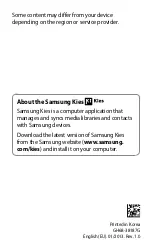
35
Using Session Initiated
Protocol (SIP)
IP Phone Configuration
Although the DPH-80 SIP phone will work in any type of LAN network, a 100mbps,
switched network is more suitable for providing good quality voice communica-
tions.
SIP phones need a proxy or redirect server to provide the directory function
required to make calls. D-Link SIP phones register the assigned phone num-
ber with the server on power up. However, D-Link SIP phones can work through
the phone book without an SIP server.
To operate properly, the DPH-80 requires a set of IP parameters such as IP
address, subnet mask, gateway address, and DNS server address. These
parameters can be configured either statically through a browser or dynami-
cally through DHCP or PPPoE. A DHCP server in the local LAN is required to
provide these parameters.
The D-Link SIP phone has many configurable parameters. These parameters
can be configured through any Java-enabled Internet browser (Netscape 6.2 or
above, IE 5.0 or above).
If your LAN network has a firewall and NAT, they should support SIP to make
and receive calls from outside your LAN network.
A
TFTP
server is required to support remote software upgrades. Please check
with your service provider for further information on upgrading your device.
Infrastructure Requirements
















































